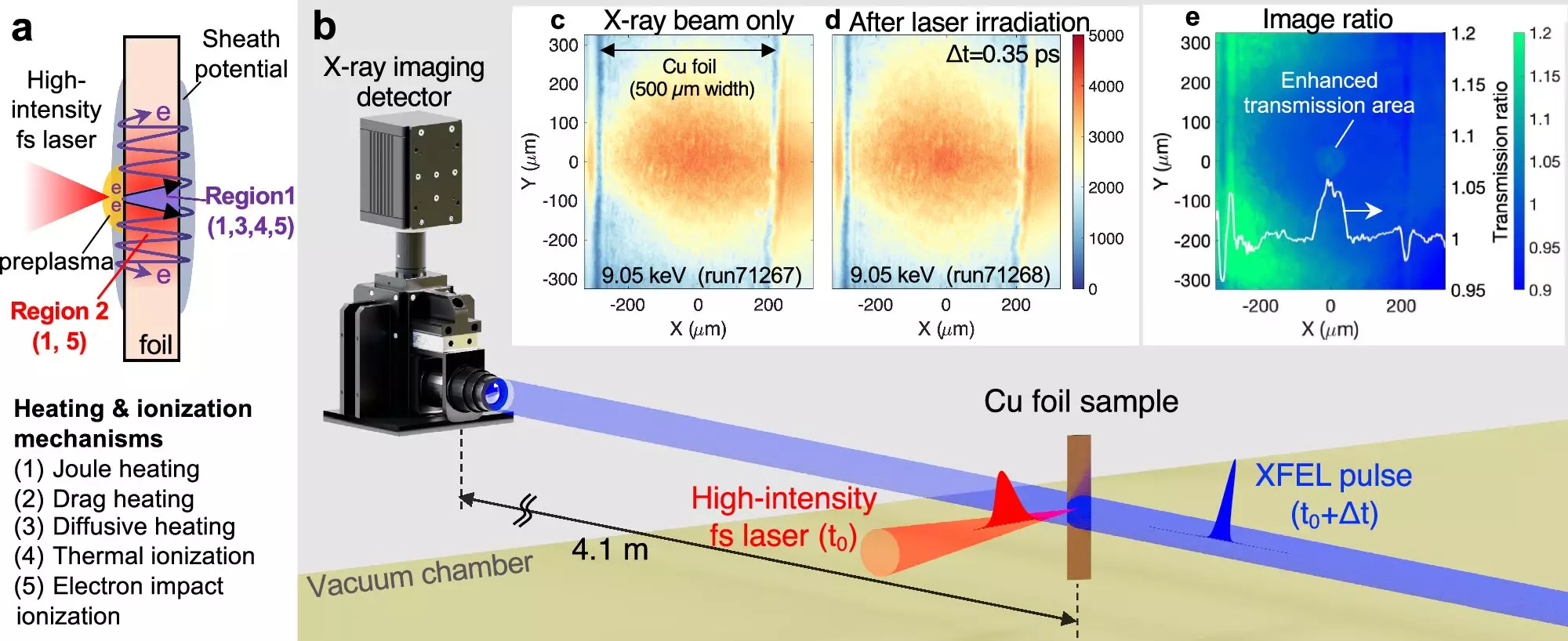In a stunning demonstration of condensed matter physics, researchers have made groundbreaking advancements in understanding the state of copper when subjected to extreme heat via high-powered lasers. This process, which occurs in mere picoseconds, initiates an extraordinary transformation where solid copper morphs into warm dense matter, reaching temperatures nearing 200,000 degrees Fahrenheit. This investigation into how materials react to such intense energy is pivotal, as it provides insights into both astrophysical phenomena and practical applications in fusion energy. The findings reveal the intricate behaviors exhibited by materials under extreme conditions, offering new vistas of understanding in modern physics.
Insights from the Research Team
Led by Hiroshi Sawada, an associate professor at the University of Nevada, Reno, the research team comprised multiple international collaborators who pooled their expertise at the SPring-8 Angstrom Compact free-electron Laser (SACLA) facility in Japan. Their research—a confluence of advanced experimental techniques and cutting-edge X-ray technology—was documented in a paper published in *Nature Communications*. By leveraging ultrafast X-ray pulses generated from XFELs (X-ray Free Electron Lasers), the team successfully tracked temperature changes in copper over time following laser exposure.
The experimental methodology hinged on a sophisticated pump-probe technique, a two-step approach that sequences the heating of copper with a powerful laser pulse and then utilizes subsequent X-ray pulses to capture the material’s evolving state. This precision enabled researchers to observe how quickly heat traversed the copper at the atomic level, a feat that was previously hindered by the exceedingly rapid heating dynamics.
The XFEL facilities capable of conducting such experiments are elite centers, with only a handful available worldwide. The proprietary technology allows researchers to visualize dynamic processes that unfold in trillionths of a second. The team utilized the capabilities of SACLA to generate highly resolved images depicting the interactions occurring in the copper as it transitioned through various states of matter. The findings were startling, challenging previously held assumptions surrounding the nature of plasma formation, and revealing instances of warm dense matter that diverged from classical expectations.
Sawada expressed astonishment at their results, indicating that simulations beforehand had anticipated a different outcome. The revelations from their initial experiments suggested unexpected thermal behaviors that warrant further inquiry into both the fundamental properties of warm dense matter and the technological aspects of laser diagnostics.
Conducting experiments at XFEL facilities is a resource-intensive endeavor, with competition for beam time fierce among researchers worldwide. The experimental design necessitated careful manipulation of copper samples, which were painstakingly cut and mounted for precise analysis. The ephemeral nature of the experiments—each laser interaction obliterating portions of the copper—underscored the need for meticulous data collection and analysis. The team reported collecting data from hundreds of laser shots, translating ephemeral observations into scientifically viable conclusions.
The utilization of XFEL technology significantly advances the spatial and temporal resolution over prior methodologies, enabling diagnostics of material responses to lasers on a micron scale—approximately the width of a human hair. By calculating heat propagation across such small dimensions, the pulsed laser approach opens a new chapter in investigating high-energy-density science.
Implications for Future Research
The scope of potential applications for this research extends across various scientific disciplines. From astrophysics to inertial fusion energy research, the insights gleaned from observing warm dense matter state contribute to foundational knowledge in how materials behave under extreme temperatures and pressures. The ability to gather empirical evidence in real time sets the stage for refining theoretical models and enhancing experimental techniques applicable in both laboratory and astrophysical contexts.
Moreover, the proposed methodologies could be adapted for other high-energy facilities, promising to expand the frontiers of knowledge in disparate fields, including materials science and quantum physics. Future investigations may encompass different materials and their molecular structure’s influences on heat transfer dynamics, enriching the pursuit of understanding how extreme conditions inform material properties.
The collaborative efforts unveiled a significant leap forward in our grasp of warm dense matter and its implications for science at large. These advancements not only deepen our understanding of materials under extreme conditions but also pave the way for innovations that may revolutionize energy generation and a myriad of applications in science and technology.

